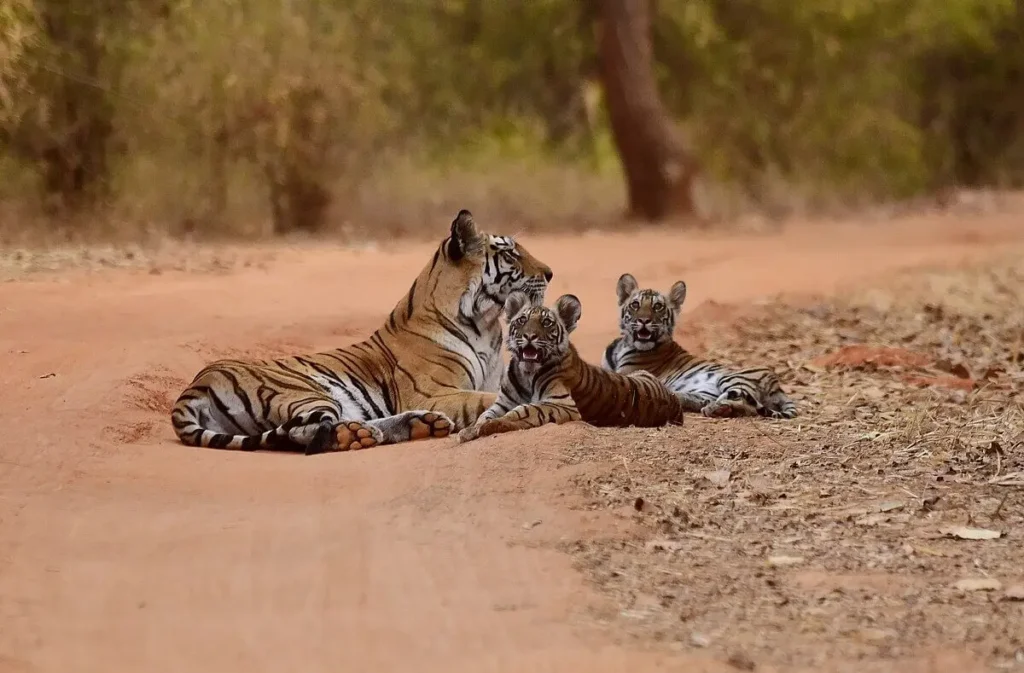Tiger (Panthera tigris) is the largest member of the cat family and one of the most powerful predators on the planet. Its majestic stature, striped coloration, and unrivaled hunting skills have made it a symbol of strength and independence in many cultures.
Tigers once roamed freely across vast areas of Asia, from Turkey to faraway Siberia. However, today their numbers have been greatly reduced due to deforestation, poaching, and conflicts with humans. In this article, we will take a closer look at the biology of tigers, their behavior, habitat, major threats, and conservation efforts.

Scientific classification
✔ The Kingdom: Animals (Animalia)
✔ Type: Chordal (Chordata)
✔ Class: Mammals (Mammalia)
✔ Row: Predatory animals (Carnivora)
✔ Family: Feline (Felidae)
✔ Gender: Panthera
✔ View: Panthera tigris
🔎 There are several subspecies of tiger in the world, including:
• Bengal tiger (Panthera tigris tigris) – the most numerous subspecies
• Siberian tiger (Panthera tigris altaica) – the largest of the tigers
• Indochinese tiger (Panthera tigris corbetti)
• Malayan tiger (Panthera tigris jacksonii)
• Sumatran tiger (Panthera tigris sumatrae) – the smallest of the subspecies
• South China tiger (Panthera tigris amoyensis) – is on the verge of extinction
Other subspecies previously existed, including the Caspian, Javan, and Balinese tigers, which became extinct due to human activities.
Appearance and features
✔ Sizes:
• Body length without tail: 200–350 cm
• Tail length: 60–110 cm
• Shoulder height: 90–120 cm
• Weight: 90–300 kg (males are larger than females)
✔ Color scheme:
• Orange-red background with black stripes (a unique pattern for each tiger, like human fingerprints)
• White tiger – a rare variant due to a genetic mutation
✔ Other features:
• Powerful paws and sharp claws that allow them to easily tackle prey
• Excellent vision, especially in the dark
• Waterproof fur that helps survive in cold conditions

Habitat and distribution
🌍 Where do tigers live?
✔ Forests of India, Bangladesh, Nepal and Bhutan
✔ Jungles of Indochina and Malaysia
✔ Rainforests of Sumatra
✔ Far Eastern Taiga (Siberian Tiger)
❌ Tigers once inhabited even wider ranges:
✔ Middle East, Caucasus, Korea
✔ Central Asia, where the Caspian tiger lived
✔ Islands of Java and Bali
🔴 Range reduction:
✔ Tigers have lost over 90% of their natural habitat in the last 100 years
✔ The biggest threats are deforestation, poaching, and destruction of natural food sources

Social behavior and lifestyle
Unlike lions, tigers – lone hunters.
🔹 Key behavioral features:
✔ Tigers lead a solitary lifestyle, except for a mother with cubs
✔ A male's territory can cover up to 1000 km²
✔ Males jealously guard their territories from rivals
✔ Interaction between tigers occurs through scent marking and roaring
💤 Activity and recreation:
✔ Tigers are active mainly at night
✔ Can sleep up to 18 hours a day
✔ They rest in secluded places – caves, under trees, in dense thickets
Hunting and nutrition
🍖 What do tigers eat?
✔ Deer, wild boar, antelope, buffalo
✔ Monkeys, porcupines and other small animals
✔ Sometimes they hunt bears and young elephants
🔎 Hunting strategy:
✔ Tigers sneak up on prey at a distance of 10–20 m
✔ Use lightning dash and jump
✔ Kill prey with a bite to the throat or back of the head
❗ Interesting:
✔ Tiger can jump 6 m long and up to 5 m in height
✔ Prey can be twice the size of the tiger itself
✔ They can eat up to 40 kg of meat at a time

Reproduction and young
🐯 How are tiger cubs born?
✔ Pregnancy lasts 3.5 months
✔ 2–4 cubs are born in a litter
✔ The female raises the offspring on her own
✔ Tiger cubs stay with their mother for up to 2 years
🦁 Mortality among infants is high:
✔ Only 50% of tiger cubs survive to adulthood
✔ Main threats – predator attacks, hunger, territorial competition
Threats and conservation of tigers
🔴 Main threats:
✔ Forest cutting – reduction of the range
✔ Poaching – tiger bones and skin are used in traditional medicine
✔ Conflicts with people – tigers attack livestock and become targets of farmers
🛡 How are tigers saved?
✔ Creation of national parks (e.g. Sundarbans)
✔ Anti-poaching programs
✔ Breeding tigers in captivity
✔ Campaigns by WWF and other environmental organizations
📉 100 years ago there were over 100,000 tigers, today there are only about 3,900 in the wild!
Interesting facts about tigers
🐯 Tigers are great swimmers and love water.
🐯 They can run at speeds of up to 60 km/h
🐯 Their roar can be heard up to 3 km away
🐯 Each tiger's stripe pattern is unique
Conclusion
Tigers are amazing creatures that need our protection. If we don't take action, future generations will only be able to see them in zoos.
🐅 What do you think about tiger conservation efforts? Do you support wildlife protection? Share your thoughts!